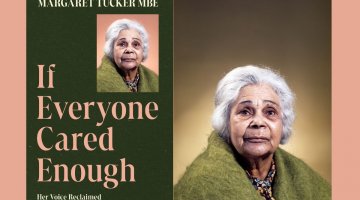Traditional bark cloth art is more than a craft according to the University of Canterbury Macmillan Brown Centre for Pacific Studies’ 2023 artist in residence.

Tui Emma Gilles is an artist working with ngatu, Tongan tapa bark cloth, currently based at the University of Canterbury where she will share her love of ngatu and create a body of work for exhibition.
Sustainable Development Goal (SDG) 17 – Partnerships for the goals.
Auckland-based Tongan artist Tui Emma Gillies, who arrived in Ōtautahi this week, regards ngatu, or Tongan tapa (bark cloth), as a fine art and a way to help people connect and create together. Gillies will spend her residency at Te Whare Wānanga o Waitaha | University of Canterbury’s Macmillan Brown Centre for Pacific Studies creating awareness about ngatu and preparing her first solo exhibition.
Gillies grew up surrounded by ngatu and has for many years worked with her mother, renowned ngatu artist Sulieti Fieme’a Burrows MNZM.
“I’m very drawn to tapa, I’ve been surrounded by it since I was baby until I was 18,” Gillies says. “My room was like a tapa womb; I grew up with this warm earthy tapa covering the walls. I thought it was normal.”
Ngatu is made from the inner bark of the mulberry tree, soaked and pounded to create a fine paper that is glued together with tapioca starch and painted with kupesi (images).
“Tapa/ngatu is very important and significant to our Tongan culture. It’s used for ceremonies and special occasions such as graduations, births, weddings and so on. We have a royal family in Tonga and sometimes a big 150-foot tapa is rolled out like a red carpet for royals to walk on,” she says.
Together with her mother, Gillies creates artworks combining traditional materials and techniques with contemporary elements.
“Some of my work is a bit political,” Gillies says in relation to her use of religious imagery that gained public attention and caused ripples in the more traditional parts of her family.
“I don’t mean to be political; I’m just doing what I have a calling for. The painting, Woman On The Cross, I was just reminding us that women are important, and we do so much as mothers, wives, and in our role in society.”
With works exhibited and sold in Aotearoa and internationally, and national recognition courtesy of a 2018 Creative New Zealand Heritage Arts Award, Gillies and Burrows are established artists who receive regular invitations to travel overseas to share their skills.
A recent workshop was at the 2023 Malama Honua – Indigenous Perspectives on Sustainability conference in Hawaii. Gillies and Burrows helped participants make a mini ngatu together, which they painted and gifted to the conference host. It was a moving experience, Gillies says.
“It was a reminder that when you get a group of people together, just like we do in our traditional Tongan culture called koka’anga, we create ngatu, talk, laugh, and cry, like a healing space. In Hawai’i we all painted and it was a healing process, very emotional.”
Gillies is dedicating her first month in Ōtautahi Christchurch to research, and she is grateful to have access to and support from UC’s facilities, libraries and wide range of experts. From February to April 2024, she’ll create a body of work focusing on the theme of ocean health and sustainability, which is particularly pertinent for Pacific nations due to looming threats including sea level rise, overfishing and ocean warming.
University of Canterbury students and staff are in for a treat as Gillies plans to hold a workshop to share her love of ngatu during her residency.
The University of Canterbury Macmillan Brown Centre for Pacific Studies artist’s residency, funded by Creative New Zealand, is open to artists working across a variety of mediums who work creatively with themes of environmental protection, climate crisis response and community sustainability.








